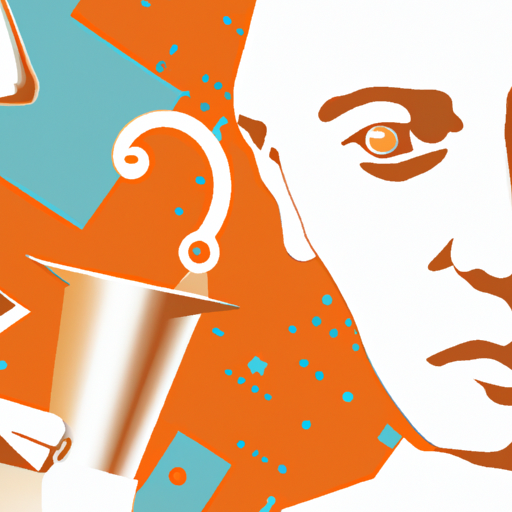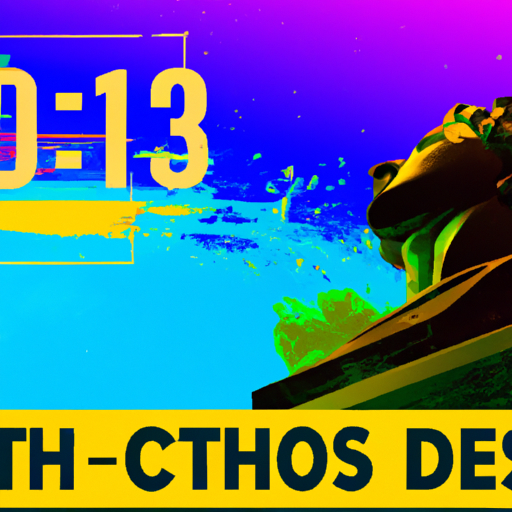The History of Loki: Is He a God?
Unearth the mysteries of Loki to uncover if he is, in fact, a divinity! Delve deep into his past and explore the secrets that lie beneath to get to the bottom of this enigma. Unravel the threads of his story to see what truths you can find. Is he really a deity or something else entirely? The answers may be hidden within his past – it’s up to you to discover them.

The enigma of Loki has held the attention of people for ages. To discern the reality behind this befuddling personality, we must delve into his past. From Norse mythology to modern pop culture, Loki’s narrative is replete with surprises and unexpected turns. To comprehend his true nature, we must go back in time and investigate his history.
In Norse mythology, Loki is depicted as a mischievous god who often provokes pandemonium and bedlam. He was involved in some of the most renowned stories from Norse mythology such as the abduction of Thor’s hammer and Fenrir’s binding.
Over time, Loki’s image has changed drastically. In some societies he was viewed as an evil being while others perceived him as a helpful companion or even a deity. This ambiguity still exists today with some believing that he is just a prankster spirit while others think he could be more than that.
No matter what your opinion on Loki is, one thing is certain: His story is filled with secrets waiting to be revealed! By delving into his history and uncovering its mysteries, we can get closer to understanding who he really is – deity or something else entirely?
.
Introduction

A deity of perplexing complexity, Loki is shrouded in mystery. His reputation as a mischief-maker and villain precedes him, and his affiliation with both the Aesir and Vanir gods has been debated for centuries. Fire and magic are often attributed to him, while some sources even suggest that he fathered several monsters. Despite this chaotic nature, many ancient Norse people still held respect for the power he wielded – capable of bringing both fortune and misfortune.
– Loki’s Historical Place in Norse Mythology
Centuries ago, a giant was born who would later become known as Loki, the Trickster God. His presence in Norse mythology is vast, and his reputation for cunning manipulation is renowned. He is often seen as a source of change and chaos, and has had both positive and negative impacts on the tales of Norse mythology.
Loki’s journey began when he was adopted by Odin, making him an Aesir god. As father to monsters such as Fenrir, Jormungand, and Hela, his relationships with other gods were complex. Depending on the situation he could be either a friend or foe to them. The most famous example of this is when Loki stole Thor’s hammer Mjölnir which resulted in a long-standing feud between them.
At Ragnarok – the end of days in Norse mythology – Loki released all of the monsters from their prison before aiding them during their battle against Asgardian gods. Despite his treacherous tendencies, he ultimately sacrificed himself to save Asgard from destruction – leading to his redemption among other gods.
Loki’s place in Norse mythology is one that has been shaped over time through various stories and interpretations; his ability to cause chaos makes him an intriguing figure that continues to captivate audiences today.
– The Evolution of Loki’s Character Throughout History
Throughout the ages, Loki has been an ever-evolving figure. From his beginnings in Norse mythology to his current incarnation in Marvel comics, his persona and story have undergone a drastic transformation. In Norse tales, he was seen as a chaotic force of mischief and trickery; often causing strife between other gods with his manipulations and deceit. His untrustworthiness and dangerousness made him a figure of vilification.
However, in Marvel comics Loki’s role has taken on a much different hue. He still retains his mischievous nature and cunningness, but is now viewed as an anti-hero with a moral code. He is more of an ally than an enemy, and his motivations are far more intricate than before. Furthermore, he has become increasingly complex due to the development of relationships with characters like Thor, Odin, and Sif.
This evolution can be attributed to how villains are perceived in modern culture; as it changes so does our view on what constitutes heroism or villainy. This shift has allowed for characters such as Loki to have a much richer depth than before; making him one of the most beloved figures in popular culture today.
– Exploring the Ancient Origins of Loki as a God
An aura of mystique pervades the tale of Loki, the Norse god of chaos and mischief. His legacy has been retold in countless stories, films, and books, but to truly understand his ancient beginnings, we must delve into the original sources. The Poetic Edda is a repository of Old Norse poems that describe him as a trickster figure who wreaks havoc on gods and mortals alike with his mischievousness. Other texts such as the Prose Edda also provide insight into Loki’s past deeds and relationships.
Myths about Loki shed light on his character and motivations. He is often seen as a disruptive force that brings disorder to the world and challenges authority; yet there are tales that portray him sympathetically as an outsider who is misunderstood due to his chaotic nature. This ambiguity can be seen throughout Norse mythology where he appears both as an adversary and ally depending on the situation.
Loki has connections with figures from other mythologies around Europe too – some scholars have suggested he may be related to Prometheus from Greek mythology or Loke from Anglo-Saxon tradition. This could suggest that he had an influence beyond just Norse mythology, forming part of a larger cultural exchange between different cultures in Europe during ancient times.
Exploring Loki’s ancient origins reveals much about how this enigmatic figure has evolved over time and why he still captures people’s imaginations today – from chaos-bringer to sympathetic outsider, he remains one of the most captivating figures in Norse mythology.
– Examining the Role of Loki in Norse Religion Over Time
The enigmatic Loki of Norse religion has a complex and varied history. Initially seen as an amusing prankster, his character underwent a drastic shift over time to become something far more sinister and dangerous, with some even perceiving him as a personification of chaos. By examining the development of Loki’s place in Norse mythology, we can gain insight into the evolution of Norse spiritual beliefs and values.
In early sources, Loki is depicted as a clever figure who often uses guile to escape from difficult predicaments. He is also known for playing pranks on other deities and humans alike. However, this lighthearted image changes drastically in later sources where he is linked to the forces of disruption and destruction. In these accounts, he is represented as a malicious being who brings about devastation through his actions.
This transformation of Loki’s character reflects changes in Norse religious thought. As Christianity spread throughout Scandinavia during the Middle Ages, pagan beliefs were gradually replaced by new Christian values that focused on orderliness and steadiness rather than chaos and destruction. This alteration can be seen in how Loki’s character shifted from being a mischievous jester to an embodiment of disorder itself.
Ultimately, exploring the role of Loki in Norse religion over time provides us with invaluable understanding into the progression of Norse culture and faith. From his beginnings as an entertaining trickster god to his later associations with disruption and demolition, Loki’s story offers us an intriguing look at how spiritual thought has evolved over time.
– Uncovering the History Behind Loki’s Reputation as a Trickster God
Mystery and intrigue have long surrounded the figure of Loki, a god of Norse mythology. His legendary mischievousness and penchant for deception have earned him a reputation as a trickster god. But what is the source of this notoriety? To uncover the truth, we must delve into the ancient tales of Norse mythology.
Loki was often depicted in these stories as a shapeshifter who could take on different forms to mislead or outwit others. He was also renowned for his clever wit and his ability to outsmart even the most powerful gods. In addition, Loki’s involvement in some of Norse mythology’s most famous sagas – such as helping Thor reclaim his hammer from Thrym and tricking Hod into shooting Balder with an arrow made of mistletoe – further solidified his status as a masterful trickster.
The end-of-the-world scenario known as Ragnarok also played an important role in Loki’s transformation into a figure of chaos and deception. In this tale, he is portrayed as an agent of destruction who helps bring about Ragnarok by releasing Fenrir, the giant wolf, from captivity. By unleashing Fenrir upon Asgard, Loki caused untold destruction and death – thus cementing his place in history as a dangerous force that should not be underestimated or taken lightly.
It is clear that centuries’ worth of stories and folklore have shaped Loki’s reputation as a trickster god. From his shape-shifting abilities to his part in Ragnarok, he has become an iconic figure whose legacy still captivates people today.
conclusion

The enigmatic figure of Loki, who has been revered as a deity in the annals of Norse mythology, is renowned for his mischievousness. His exploits have been known to bring about both favorable and unfavorable outcomes.
.
Some questions with answers
Q1. Is Loki a god?
A1. Yes, Loki is a god in Norse mythology.
Q2. What is Loki’s history?
A2. According to Norse mythology, Loki is the son of two giants and was born in Jotunheim, one of the Nine Worlds of Norse cosmology. He was known as a trickster god who could shape-shift into animals and humans.
Q3. What are some of Loki’s powers?
A3. Some of Loki’s powers include shape-shifting, illusion casting, and manipulating fire and ice. He also has the ability to fly.
Q4. How does Loki fit into Norse mythology?
A4. In Norse mythology, Loki is an important figure who often causes chaos but also helps the gods in their quests or battles against their enemies.
Q5. What happened to Loki at the end of his story?
A5. At the end of his story, Loki was bound in chains by the other gods because he had caused too much trouble and destruction with his tricks and schemes. He was eventually killed by Odin’s son after Ragnarok (the great battle between gods).



